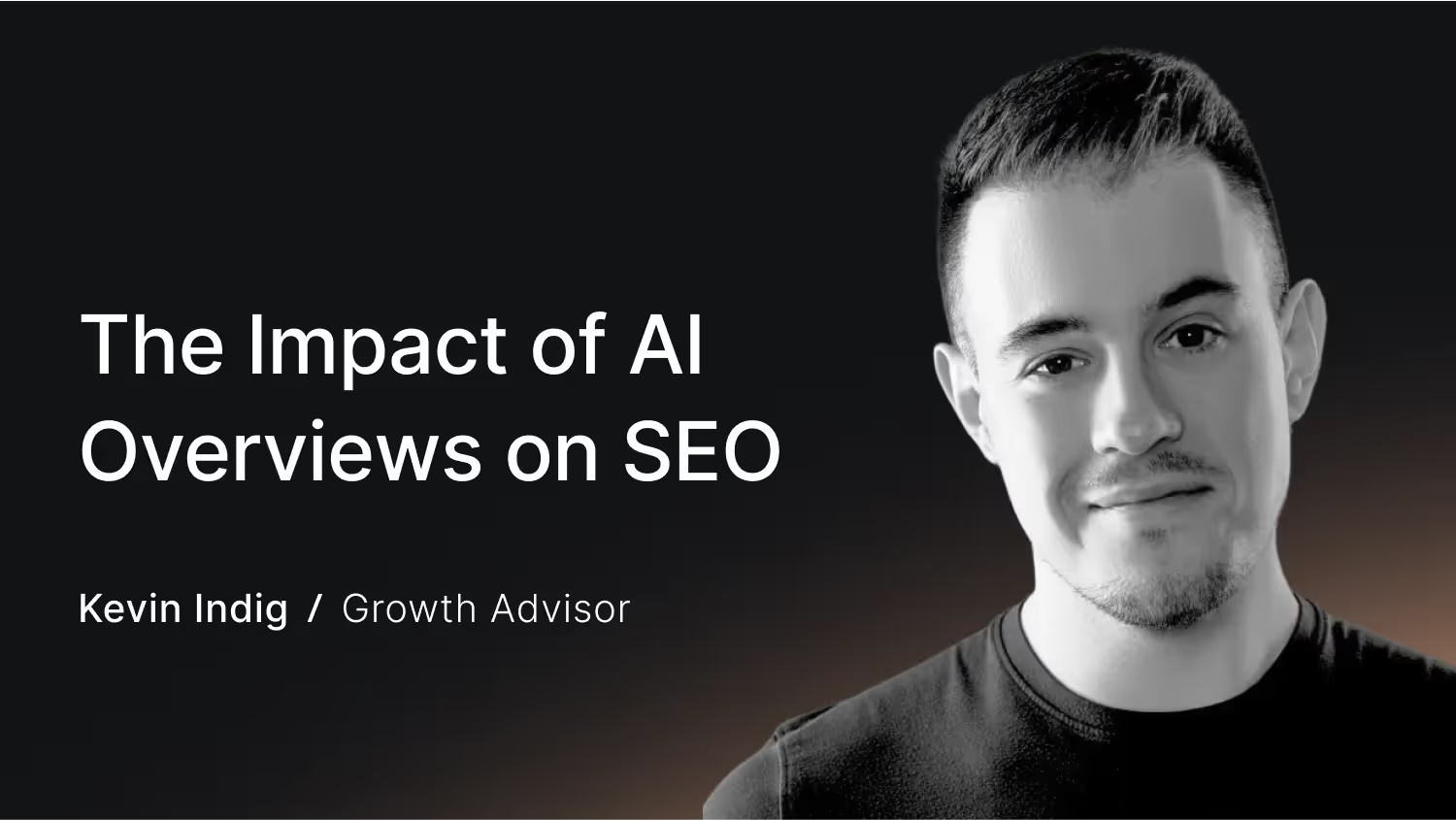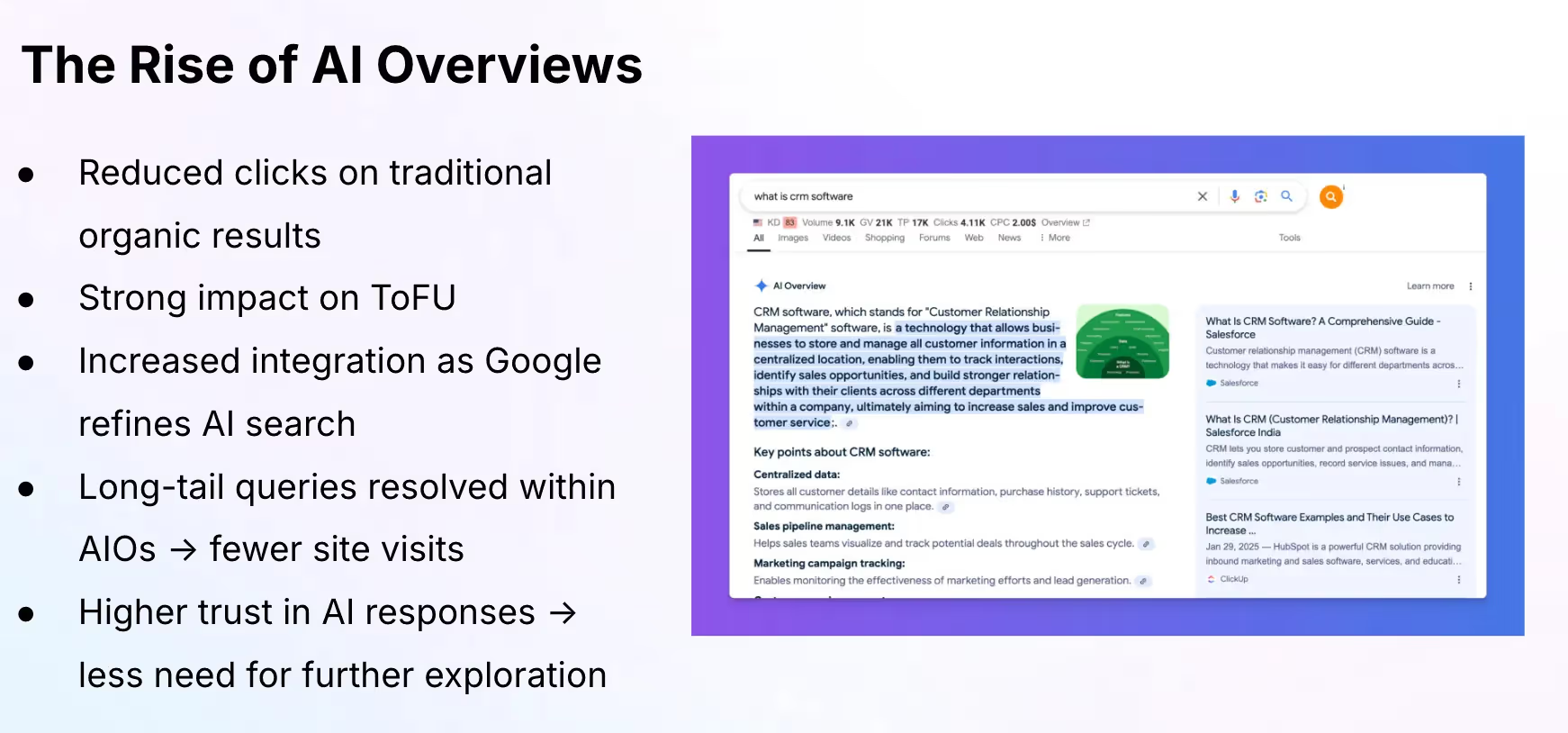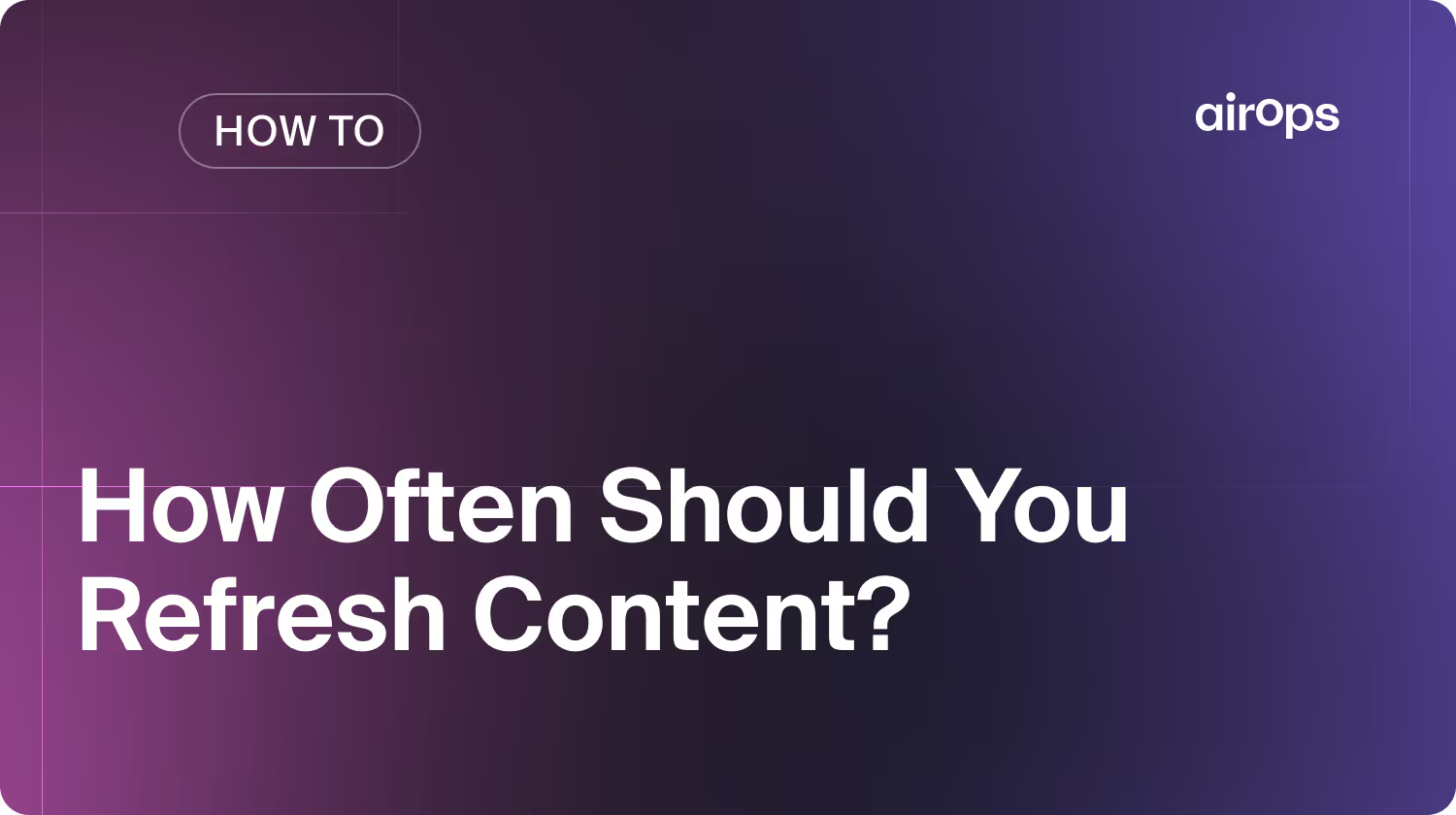The Impact of AI Overviews on SEO with Kevin Indig

AI overviews (AIOs) are reshaping how users find information, particularly for top-of-the-funnel queries. In an exclusive webinar, Kevin Indig, a leading SEO expert who has helped companies like Hims, Toast, and Reddit reach over 100M users through organic growth, shared eye-opening insights on the impact of AIOs on click-through rates (CTRs), ranking potential, and long-tail search.
Watch the full recording below or keep reading for more lessons.
Quick Recap of Key Takeaways
- AIOs are having the biggest impact on top-of-funnel, informational queries
- When Google shows AIOs, CTRs decrease, even for paid results and cited sources
- Optimizing for AIOs requires a focus on content relevance, brand presence, and technical factors like JavaScript rendering
- Measuring AI search visibility involves tracking citations, brand mentions, and referral traffic from AI chatbots
- SEOs need to adapt their KPIs and content strategies to account for the shift towards AI-driven search
The Challenge
As AI overviews become more prevalent in search results, particularly for long-tail, informational queries, websites are seeing a significant impact on their organic traffic. Kevin analyzed over 19 studies, some looking at hundreds of millions of keywords, to understand the extent of this disruption. The data reveals that even when a website is cited within an AIO, its click-through rates are much lower compared to when no AIO is shown.
The impact of AIOs on organic traffic is substantial:
- 30% of LinkedIn poll respondents reported a traffic decline in the last 60 days attributable to AI
- CTRs decrease across the board when AIOs are shown, including for paid results and cited source
- Informational, top-of-funnel queries are most affected, with long-tail searches showing AIOs more frequently
Optimizing for AIO Rankings
To increase the likelihood of being cited in an AIO, websites need to focus on several key factors:
- Content relevance: Ensure content is highly relevant to the user's intent and provides a comprehensive, well-structured answer
- Brand presence and entity recognition: Build a strong web footprint and gain visibility on trusted sources
- Technical optimization: Avoid relying on client-side JavaScript rendering, as LLMs struggle to process it
The most effective approach is to analyze the current AIO answer for a target query, compare it to your own content, and iteratively optimize to provide an even better response. This may involve adjusting the format, depth, or breadth of your content to better match user intent.
Measuring AI Search Visibility
Tracking your brand's visibility in AI search involves monitoring:
- Citations and brand mentions within AIOs and AI chatbots
- Referral traffic from AI chatbots to your website
- Potential partnerships or licensing deals with AI platforms
Tools like SEMrush, Ahrefs, and Ziptie now offer AIO tracking capabilities, making it easier to measure your performance in this new search landscape.

Best Practices and Key Learnings
Adapt Your KPIs
With the rise of AIOs, traditional SEO KPIs like organic traffic may not paint a complete picture. Indig recommends:
- Measuring visibility in AI chatbots, even without direct citations
- Focusing on the bottom-line impact of organic traffic, rather than just volume
- Conducting post-purchase surveys to understand how users discover your brand
Rethink Your Content Strategy
To succeed in the age of AI search, content needs to be exceptional and address information gaps. This means:
- Identifying and addressing topics that aren't well-served by existing content, even if they lack search volume
- Providing unique insights or data that sets your content apart
- Creating content that helps users make choices, such as comparing alternative solutions or guiding product selection
Communicate the Narrative
As an SEO professional, it's crucial to effectively communicate the impact of AIOs to leadership and stakeholders. This involves:
- Explaining the reasons behind potential traffic declines
- Emphasizing the importance of bottom-line metrics over vanity metrics
- Develop a plan to regain lost revenue or leads through targeted content strategies
Putting the Insights into Practice
The rise of AI overviews presents both challenges and opportunities for SEO professionals. By adapting your content strategies, measurement techniques, and communication approach, you can navigate this shifting landscape and continue to drive organic growth. Focus on creating exceptional, relevant content that addresses user needs, build your brand's web presence, and stay attuned to the evolving ways in which users discover information in the age of AI-driven search.
Ready to take your SEO strategy to the next level? Email team@airops.com to claim one of 10 exclusive training opportunities with AirOps experts. Learn how to optimize your content for AI search, measure your performance, and future-proof your organic growth.
Win AI Search.
Increase brand visibility across AI search and Google with the only platform taking you from insights to action.
Get the latest on AI content & marketing
Get the latest in growth and AI workflows delivered to your inbox each week
.avif)





